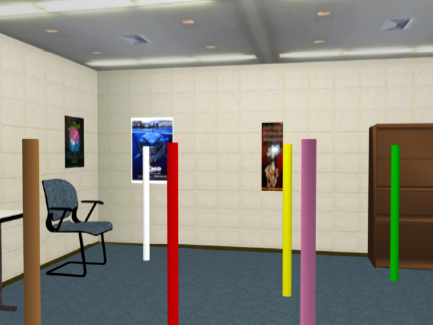
|
Related work posits that while current immersive virtual environments are expensive, that head-mounted display technology may become widely affordable in the near future. A significant problem for the widespread adoption of virtual environments that enable people to actively explore them will then be the problem of space. Having large areas suitable for active exploration of a large virtual environment will not be practical and commodity-level virtual environment equipment will need to be placed in small rooms. The important issue my work has addressed is how subjects can explore large environments on foot when physical space is constrained. The qualification ``on foot'' is critical as we have shown that using a joystick is inferior to foot exploration, and devices such as treadmills are expensive. Our solution works by manipulating the translational and rotational gain of movement so that the virtual environment affords cognitively-friendly exploration.
| Home | Research | Publications | Teaching | Vita | Students | Personal |